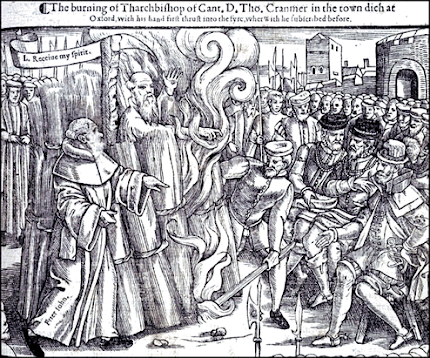14. If Christ had a reasonable soul how can we escape the conviction that he was a human person ?
It is indeed a great mystery that the unity of personality should remain in the God-man, while there are two centers of consciousness, an infinite knowing on the one hand, and a finite knowing on the other, and two distinct though ever harmonious wills. The fact, however, that a God took, not a man, but a human nature into his eternal personality, is clearly revealed in Scripture. The one person is both God and man. The mystery remains for the exercise of our faith.
15. What were the principle heresies which obtained in the early church concerning the constitution of Christ's person ?
1st. The Manichaean heresy, disseminated by Manes, one of the converted Magi, who, during the third century taught a mixed system of religious philosophy, adapting the historical facts of Christianity to the peculiar principles of the Persian philosophy. He taught that Christ and the Holy Ghost were immediate emanations from the eternal God, superior to all creatures, and that the Christ of history was this spiritual being, who appeared among the Jews in the shadow or appearance of a material body, which existed only in the perception of men. As Manes taught that matter is essentially evil, and that Christ appeared for the very purpose of delivering human souls from their entanglement in matter, he necessarily also taught that Christ's human body was only an appearance assumed for the purpose of making his presence known to man as at present organized.
2d. The Apollinariah heresy, disseminated by Apollinaris the younger, bishop of Laodicea, in the fourth century. He taught the orthodox doctrine concerning the trinity, and further that the Eternal Word, second person of the trinity, became incarnate by taking to himself a true human body. On the other hand he denied that Christ had a human soul, since the place of a soul in his person was occupied by his divinity. In his view, then, the person of Christ embraced (1.) the Eternal Word, (2.) a t/w^, or principle of sensitive animal life ; and (3.) a true human body— but no rational human soul.
3d. The Nestorian heresy, charged upon Nestorius, a Syrian by birth, and bishop of Constantinople, during the fifth century, by his enemy, Cyril, the arrogant bishop of Alexandria. Cyril obtained a judgment against Nestorius in the Council of Ephesus, A. D. 431, to the effect that he separated the two natures of Christ so far as to teach the coexistence in him of two distinct persons, a God and a man, intimately united. But it is now, however, judged most probable by Protestant historians that Nestorius was personally a brave defender of the true faith, and that i the misrepresentations of his enemies were founded only upon his uncompromising opposition to the dangerous habit then prominently introduced of calling the Virgin Mary the mother of God, because she was the mother of the human nature of Christ. [From: First Edition: A. A. Hodge, Outlines of Theology. Ch. XX:14-15].
What was the Nestorian Heresy?
This term rather expresses an exaggerated, one–sided tendency of speculation on this subject than a positive definable false doctrine. It is the tendency to so emphasize the distinction of the two complete, unmodified natures in Christ, as to throw into the shade the equally revealed fact of the unity of his Person.
This tendency was most conspicuous in the writings of Theodore of Mopsuestia, the leader of the Antiochian school, and from him it became the general character of that school. The theology of the Eastern Church of the fourth and fifth centuries was divided between the two great rival schools of Alexandria and Antioch. "In the Alexandrian school, an intuitive mode of thought inclining to the mystical; in the Antiochian, a logical reflective bent of the understanding predominated."—Neander, "Hist.," Torrey's Trans., Vol. 2., p. 352.
Nestorius, who had been a monk at Antioch, became patriarch of Constantinople. He disapproved of the phrase, "Mother of God" (theotokos), as applied to the Virgin, maintaining that Mary had given birth to Christ but not to God. Cyril, patriarch of Alexandria, opposed him, and both pronounced anathemas against each other. Nestorius supposed, in accordance with the Antiochian mode of thought, that the divine and the human natures of Christ ought to be distinctly separated, and admitted only a suna>feia (junction) of the one and the other, an ejnoi>khsiv (indwelling) of the Deity. Cyril, on the contrary, was led by the tendencies of the Egyptian (Alexandrian) school, to maintain the perfect union of the two natures (fusikh< e[nwsiv). Nestorius, as the representative of his party, was condemned by the Council of Ephesus, AD. 431.—Hagenbach's "Hist. of Doct.," Vol. 1., § 100.
From: "The Person of Christ" in Outlines of Theology, A. A. Hodge.
Answer. As it was in the beginning, is now, and ever shall be : world without end. Amen.





1 comment:
You will have to forgive the lack of a Greek font for the Greek words in parentheses. The web page from which I borrowed the quote did not have the proper fonts. I do not have my hard copy of Hodge handy to replace the Greek with a transliterated Greek.
Sincerely,
Charlie
Post a Comment